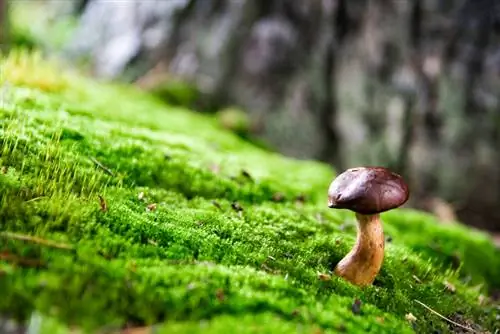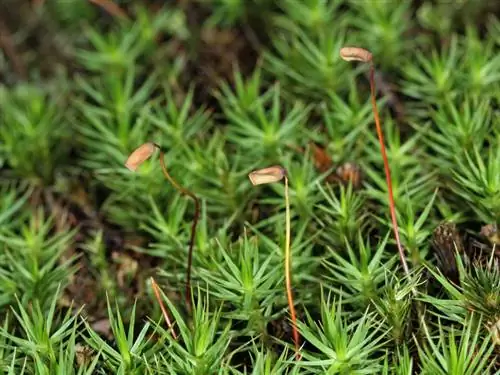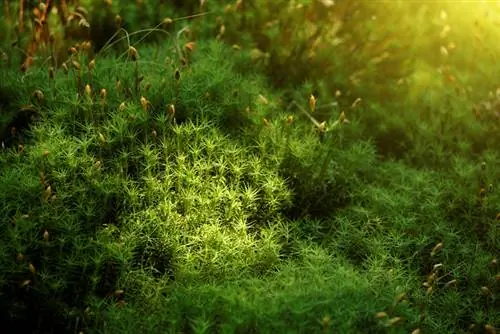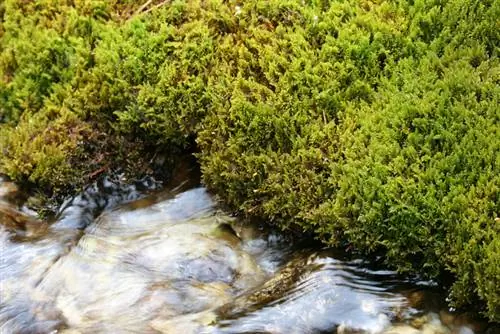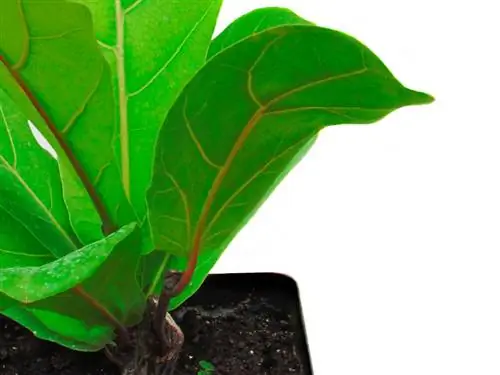- Author admin [email protected].
- Public 2023-12-16 16:46.
- Last modified 2025-06-01 06:02.
Their inconspicuous appearance and widespread status as weeds do not exactly put mosses at the center of popular conservation. Nevertheless, moss needs protection. Numerous red lists in Germany and Europe list endangered moss species. We explain here why this is the case and which mosses should be treated carefully.

Why are mosses protected?
In Germany, many moss species are protected because they are essential for biodiversity as pioneer plants, microhabitats and pollutant filters. Certain species, such as Hamatocaulis vernicosus and Dicranum viride, are endangered and protected by the Habitats Directive.
Convincing arguments speak for protecting moss
The profile tells us that mosses have colonized the earth for almost 400 million years. As a result of extensive urbanization, rootless land plants are now in decline and some are threatened with extinction. It shouldn't come to that, because for these reasons moss is an indispensable part of Mother Nature:
- As a pioneer plant, it greens inhospitable locations that are avoided by other plants
- Provides food and protection for insects
- Serves as valuable nesting material for birds
- Is indispensable as a microhabitat for small creatures and fungi
- Acts as an important indicator plant
In addition, it was proven in 2007 that mosses can absorb pollutants across their entire leaf surface. The land plants therefore make a significant contribution to filtering harmful fine dust from the air.
Protected species in Germany - A representative overview
Of the 1,121 mosses native to Germany, 54 species have already become extinct. Currently, 335 moss species are considered to be threatened with extinction or critically endangered. If this tendency is not stopped, biodiversity will be at risk. Therefore, the following species are subject to the protection of the European Habitats Directive (Fauna-Flora-Habitat Directive) by assigning them special protection areas:
| Species name (German) | Species name (botanical) | Status |
|---|---|---|
| Three-man dwarf lungmoss | Mannia triandra | unknown condition |
| Glossy varnish sickle moss | Hamatocaulis vernicosus | endangered |
| Keeled two-leaf moss | Distichophyllum carinatum | Endangered |
| Green Forktooth Moss | Dicranum viride | Endangered in continental regions |
| Green Goblin Moss | Buxbaumia viridis | missing |
| Hair claw moss | Dichelyma capillaceum | Endangered |
| Ball Hornmoss | Notothylas orbicularis | Endangered in continental regions |
| Kärtner Spatenmoss | Scapania carinthiaca | endangered in alpine regions |
| Lapland sickle moss | Hamatocaulis lapponicus | unknown condition |
| Long-stemmed gooseneck moss | Meesia longiseta | endangered |
| Rogers Hooded Moss | Orthotrichum rogeri | critically endangered in Atlantic regions |
| Rudolf's trumpet moss | Tayloria rudolphiana | endangered in alpine regions |
| Vosges moss | Bruchia vogesiaca | endangered |
In addition, all species of the genera Sphagnum, Hylocomium and Leucobryum are subject to strict nature conservation in Germany.
Tip
Since moss is protected, hobby gardeners rightly ask themselves: Can I take moss from nature to plant it in the garden? For this purpose, the legislature has stipulated that moss may be collected in small quantities in the forest for private use. An exception applies to explicitly designated protected areas. Withdrawal for commercial purposes is generally not permitted.

